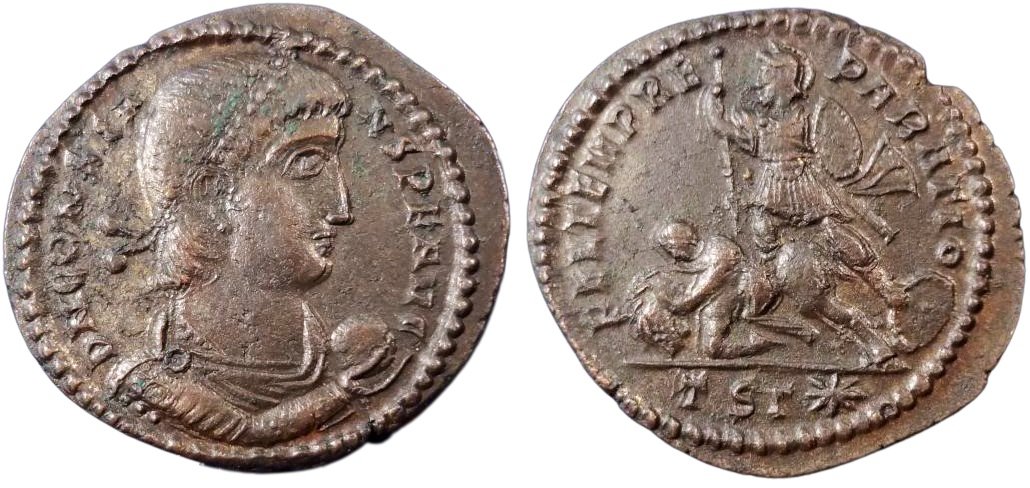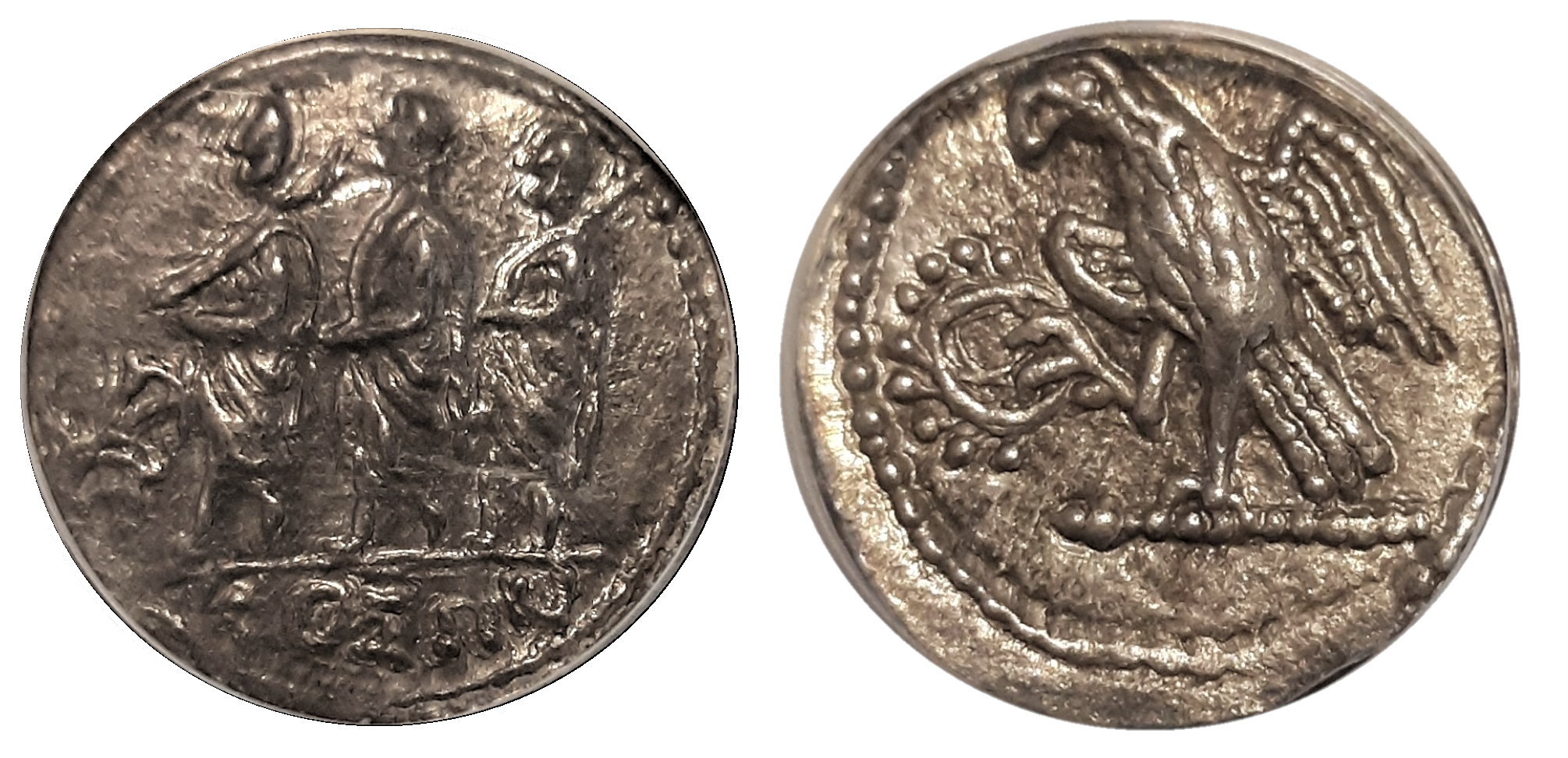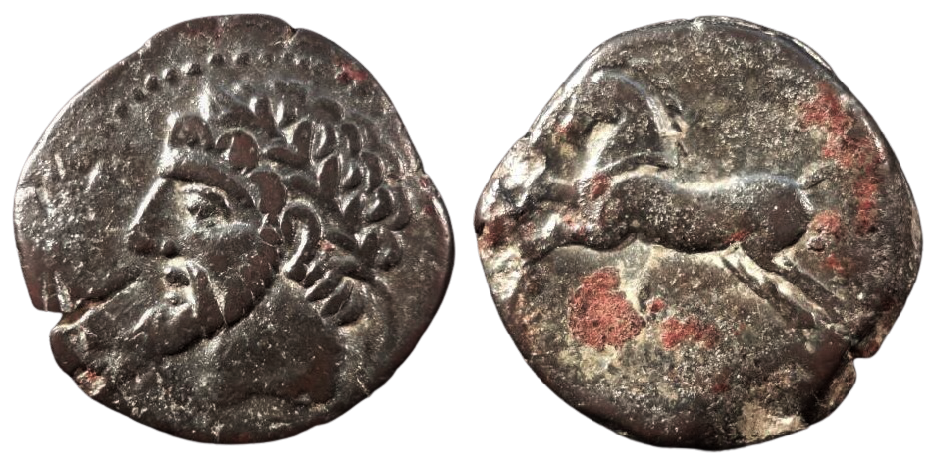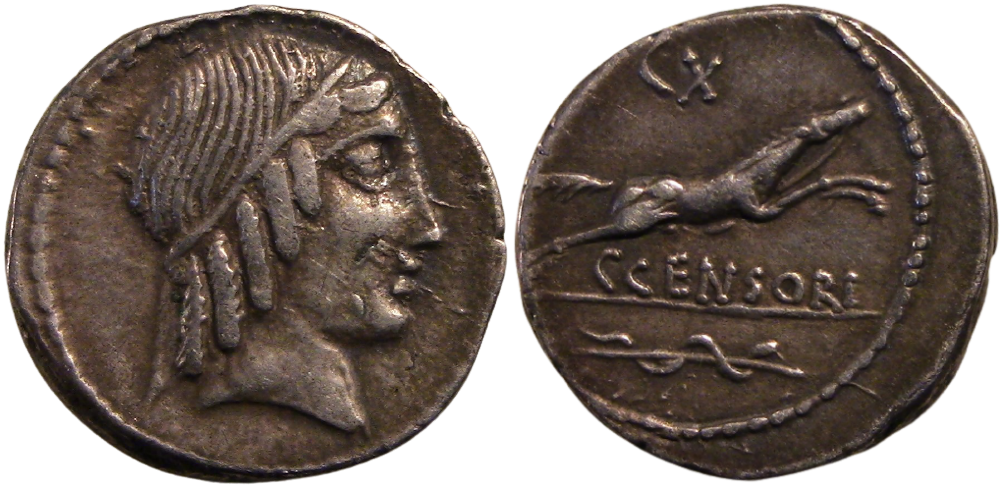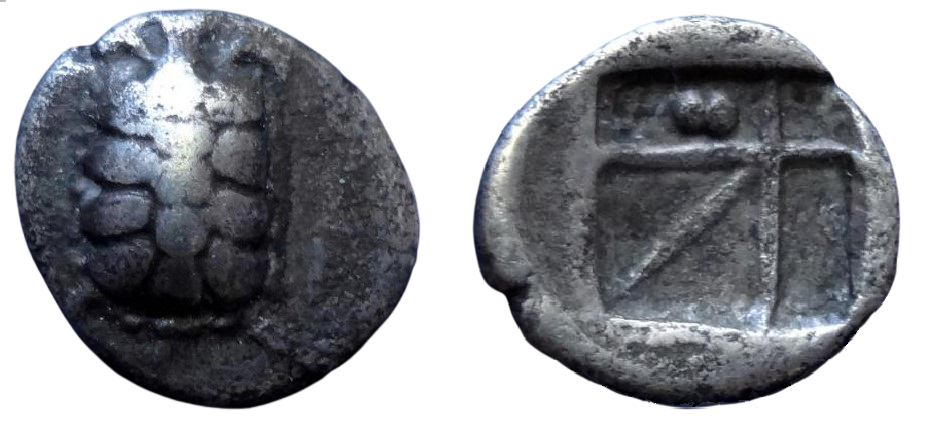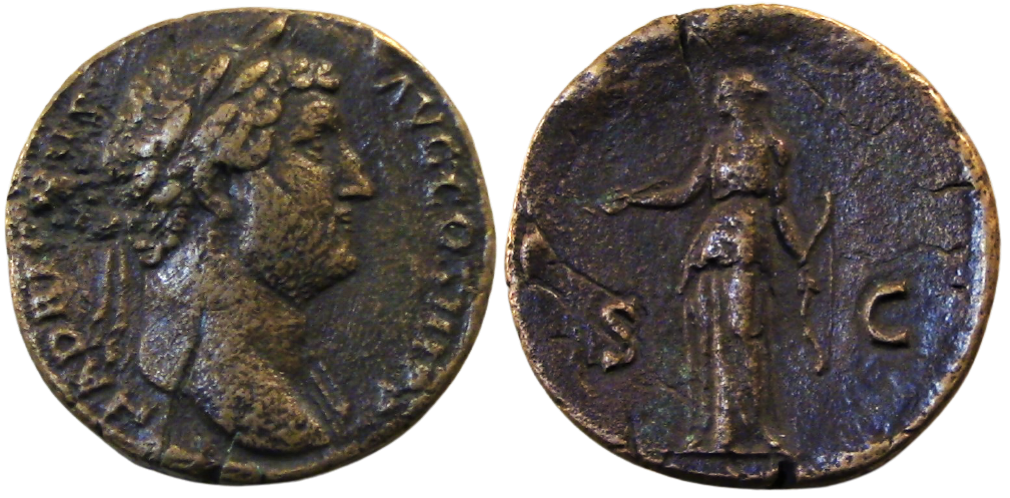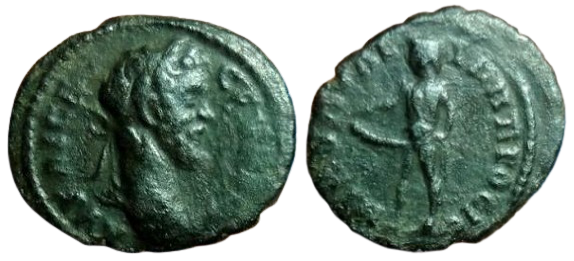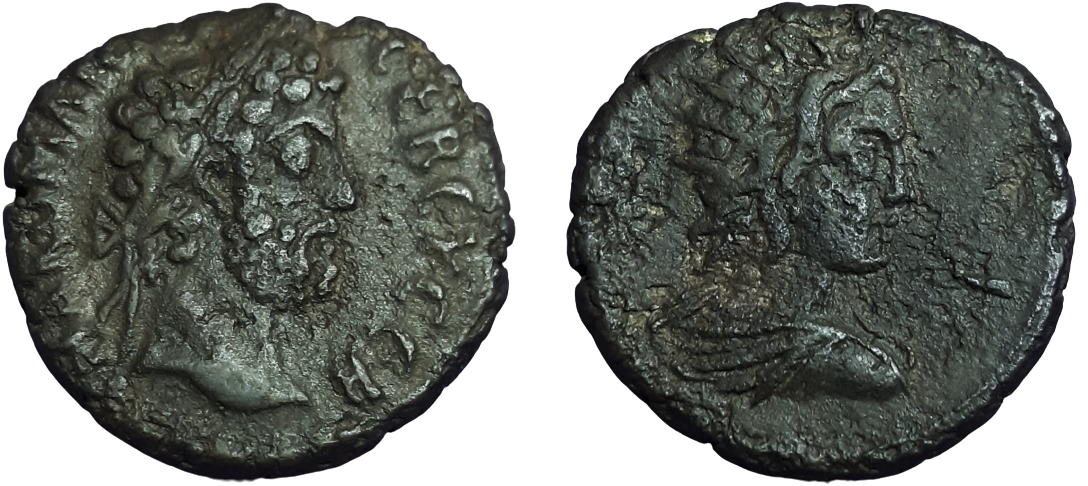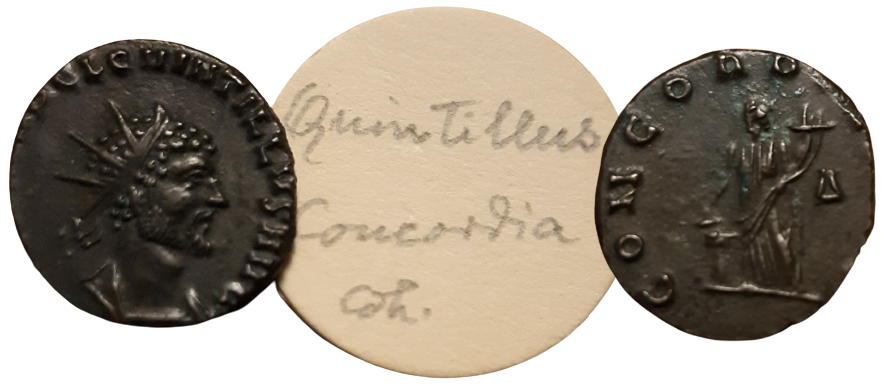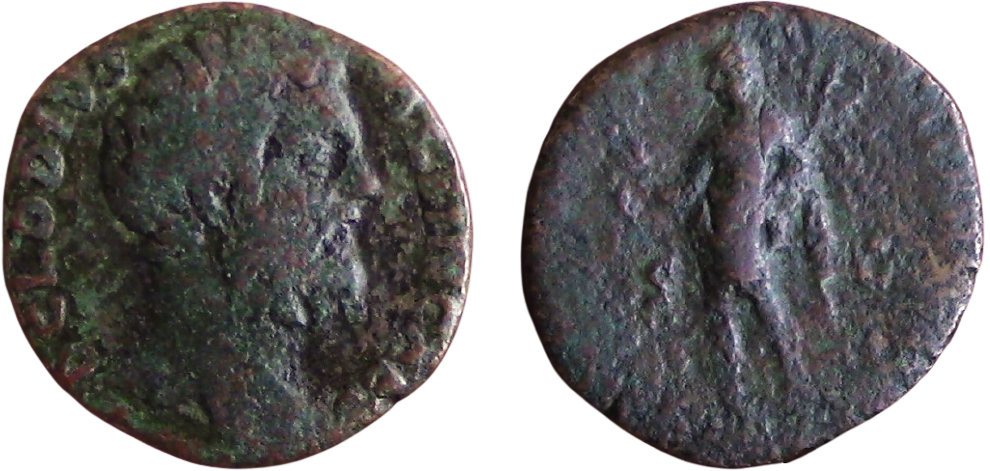
Video of this coin in hand available here
Clodius Albinus (as Caesar, 193-195) AE Sestertius (17.9g, 29mm,12h). Rome Mint, 194/5 CE.
Obv: D CL SEPT AL – BIN CAES. Bare head of Clodius Albinus right. [Legend tooled to read: D CLODIVS – ALBINVS CAES.]
Rev: SAECVLO FR – V – GIFERO COS II / S-C. Saeculum Frugiferum radiate, standing left, holding caduceus (between corn ears?) in right hand & trident pitchfork in left. [No COS II visible, but reportedly die-match to Curtis Clay no. 74 in his unpublished 1972 catalog.]
References: RIC 56; Cohen 71. See RIC (VI.1), pp. 40-41; cf. also RIC 50 (draped); RIC 61A (AE As) & 61B (AE Dupondius).
Provenance: Ex-CNG Auction e-456, (Group) Lot 731 (part of 8; Lancaster, PA, 13 Nov 2019).
Notes: Several CoinTalk members gave helpful comments on this coin [CT Thread 374682, 2 Feb 2021]. Thanks especially to Curtis Clay for his comments [CT Comment 6184008, 2 Feb 2021].
The “full name” obverse legend Sestertius of Clodius Albinus (D CLODIVS ALBINVS CAES), which this coin was tooled to resemble, is only known during his first year, 193, and very rare (Banti 20; RIC 50). But it should have a different legend break (D – CLODIVS AL – BINVS CAES) & rev. (Providentia).
Weight (17.9g) is a bit light, but within range of >10% of examples in ACSearch. Possibly reflecting metal loss due to tooling.
The Saeculum Frugiferum reverse type — a patron god of N. Africa — is of particular significance for Clodius Albinus, born in Hadrumetum in N. Africa, near Carthage.
Clodius Albinus bronze coinage is generally scarce. Most Sestertii are from 194/5, w/ obv. legends D CL SEPT ALBIN CAES or D CLOD SEPT ALBIN CAES. There are several Sestertii with Frugiferum reverse, all COS II (i.e., in 194/5).
The reverse legend is incomplete on this coin, but Clay suggested it matches a rev. die in his 1972 catalog (see refs. above), SAECVLO FRVGIFERO COS II.
Album: All Coins
Categories: Roman Coins
Tags: #AE & Billon #Large #Rare #Roman
